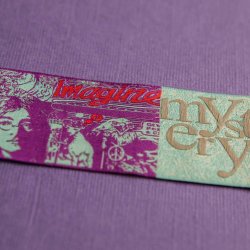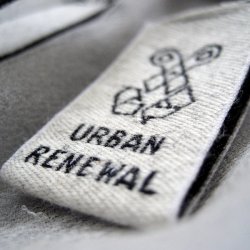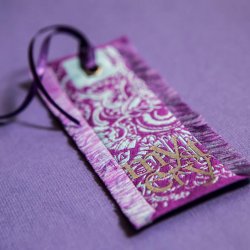
The labels evolution
 Labels were starting to be put not only inside, but also outside garments, with the event of the high definition of the jacquard loom. In that way labels starts to be an important accessory of clothing art.
Labels were starting to be put not only inside, but also outside garments, with the event of the high definition of the jacquard loom. In that way labels starts to be an important accessory of clothing art.
At ITMA 1991 in Hannover, MEI introduced the loom equipped with the Ultrasonic slit, which drew a decisive step for the production of new fashion eco-labels. More sharply and smooth edges, together with the use of natural fibers, not only polyesters, were now possible. Cotton, linen, wool, silk, all mixed with polyester or combined with special threads.
The "Fashion Labels"was born. A cotton label could be put on cotton garment, a cashmere label on a cashmere sweater, etc. The fashion label represents a step forward in the utilization and the integration of yarns, from different nature and of renowned materials.
Three things are needed to create fashion labels: creativity, innovative technologies, and a knowledge of the art of weaving, and daily we try to develop and expand these goals worldwide, even with our final products.

To sum up, there have been, until now, seven major steps in the label’s history:
IMAGE LABEL realized with the MEI thermal cutting method up to 1991
FASHION LABEL realized with the ultrasonic technology in 1991
ECO-LABEL realized with special yarns for eco-friendly concept
VIRTUAL LABEL realized with new software labels generation for a photo-weaving effect in 2000
PRESTIGE LABEL realized with HI-definition yarns and innovative air-jet labels solution machine in 2010
QR-CODE LABEL realized as anti-counterfeit label with special Jumbo Jacquard labels machine in 2011
NATURAL LABEL & RIBBON realized with Electronic shuttle-loom both in Jacquard and dobby in 2016









